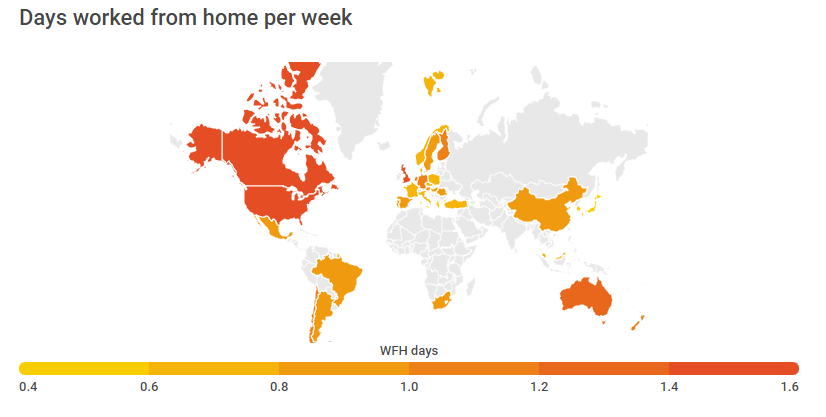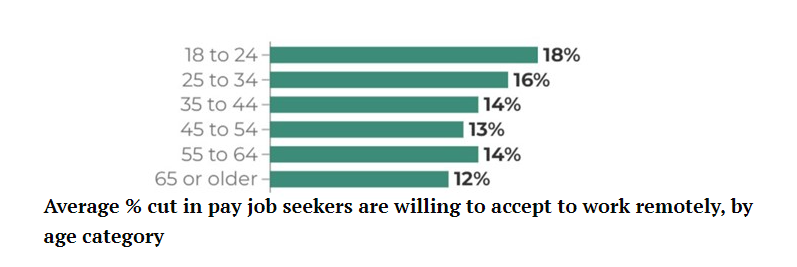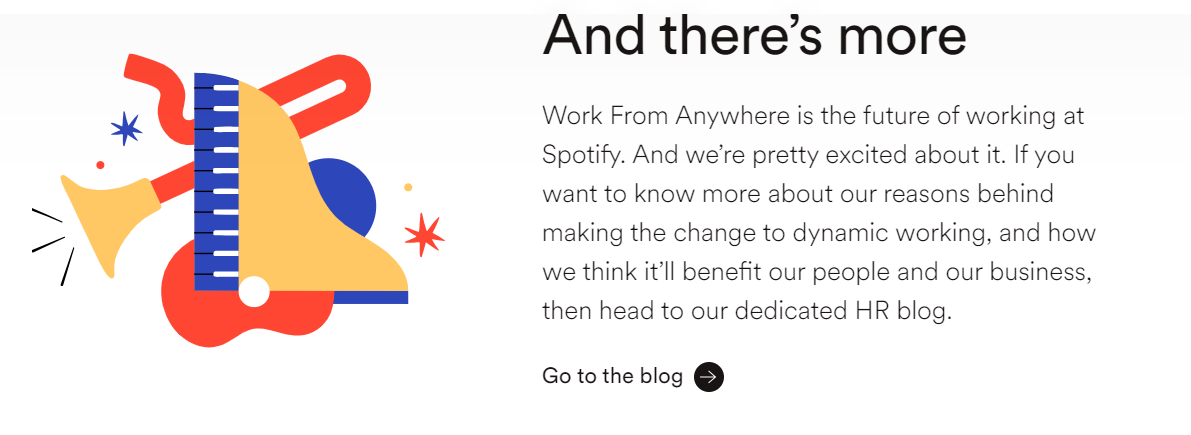

Since the pandemic began and ‘normal’ life changed forever, there have been many different conversations swirling. Should we wear masks full-time, which vaccine is most effective, and is banana bread worth the hype? Have working from home preferences changed?
But something we have consistently been coming back to is the conversation of working from home (WFH) compared to the office.
Battle lines have been drawn, with some people arguing that if WFH worked perfectly fine in a pandemic, why doesn’t it now? Others suggest productivity levels have dropped, and there is a reason why the minority of people worked from home pre-pandemic.
The research
A worldwide survey by the Institute for Economic Research (IFO) in 2023 has revealed just how many days are worked from home around the globe.


Since the pandemic, working from home in the UK has more than doubled from 4.7 million to 9.9 million between October to December 2019 and January to March 2022 (according to the Office for National Statistics). But now people are being told to return to the office, so what does this mean for you? Has the pandemic changed working from home preferences forever?
Employee attitudes
When it comes to the workforce, employees now see WFH as a major benefit, even putting it as good as an 8% rise in salary. As a result, WFH is now seen as a major attractor when jobseekers evaluate potential employers. A study found that more than 60% of job seekers hope to find remote opportunities. Further, 20% wanted to work only remotely, and 40% preferred to work most of the time remotely. A study by beqom recently showed that 65% of people were ready to settle for lesser pay if they had the flexibility to work from anywhere. These studies clearly show how workers are changing their working from home preferences.


In Remote.co’s Work & Financial Wellness Report, 63% of global workers surveyed said they would “absolutely” look for a new job if they couldn’t continue to work remotely. The high willingness of professionals to leave a current job for a new job with remote work signals the importance of work flexibility in today’s workforce. The survey also found this to be in line with the top factors professionals state they use to evaluate job opportunities:
- Remote work options (84%)
- Salary (81%)
- Work-life balance (79%)
- Work schedule (56%)
- Meaningful work (50%)
- Company culture (42%)
- Skills training and education options (40%)
- Career progression (40%)
- Vacation time (38%)
- Company reputation (38%)
Virtual First working from home experience
Roles
As a business, we have fluctuated between the two; trialling a combination of methods to determine what works best for employees and the functionality of the business.
What we have been looking to explore is whether it is dependent on the individual, their role, how busy they are and the nature of the tasks at hand, rather than suggesting a one-size-fits.
Whilst trialling diverse ways of working, we found that some setups work better than others. Within the Virtual First team, we have a variety of distinct roles. Some of these are very collaborative and require working together. But, others are much more independent, where a quiet environment is most productive.
Feedback from the Virtual First team suggests what your role entails is also a factor in where you work best. If you have a more operations role and are constantly working with the people around you, it is likely you will benefit from being around them. If anything, it is more time-consuming to be constantly ringing or messaging them when working remotely. Alternatively, if you are a content writer, being in a busy, noisy office, can have the opposite effect. We always try to be mindful of what needs doing, so where people work best might differ.
Direction
Moreover, from our experience, employees are most productive when they have direction. Despite recent articles suggesting a rise in ‘quiet quitters’ most people tend to prefer to be busy. It often leads to higher job satisfaction and allows you to use your skillset and do the job for which you were hired.
Therefore, having direction is a key part of the way people work. Not having direction in your role often leads to a lack of productivity at home or in the office.
However, those that have clearly stated their working from home preferences, and have moved to that model, are expressing greater job satisfaction and feel that their work-life-balance has improved.
What working from home experiences do other businesses have?
Unsurprisingly, other businesses have also been having similar discussions about how to best support workers with their location preferences.
Early in 2022 Airbnb announced all their employees would be working fully remotely until further notice. This meant employees could live and work anywhere with no work restrictions. Their careers page was viewed over 800,000 times as a result. Since this has been implemented, the company has been more successful than ever (although this coincides with a rise in Staycation holidays). In the first quarter of 2022, they booked a record-breaking 102 million nights and experiences. The also posted revenue of $1.5 billion, up 70% compared to the first 3 months of last year.
However, other big companies such as House of Fraser, have cancelled ‘work from home Fridays’ after footage showed workers being unproductive. A recent article in the Guardian cited a reason as ‘too many examples of people or teams not being contactable when they need to be. Moreover, it also said ‘too many colleagues via their social media profiles are demonstrating they are not treating Friday as a working day.’
Work from anywhere
Moreover, in 2021, Spotify also announced a ‘Work From Anywhere’ policy. However, more than a year later, Spotify has experienced lower turnover than pre-pandemic levels. Of course, there are other potential factors in play here; competition from streaming rivals, a rise in the cost of living, and more. But equally, they are currently as successful as other big companies whose employees work remotely.
What should we do going forward?


There are mixed results on how effective working from home is. But equally, it’s hard to convince workers back to the office when so many of us were able to function whilst working remotely,
There are also cost benefits for both the employee and employer, which particularly at the moment is important. Employers can save money on renting office spaces and can provide online training courses without having to compensate for travel. Employees can save on commuter costs and utilise resources at home. This is something which has been a big factor when comparing the two ways of working, especially as prices continue to soar.
Structure in a workplace is key, so our approach going forward has been a mix of home and office working. We have set days at home, with a flexible approach in case something else comes up or circumstances change.
Our decision
Virtual First has recently implemented a ‘work from anywhere policy.’ This means employees can work in another part of the country or the world for a short period of time. We hope this will allow employees to have a better work-life balance. Alongside this, we have given our employees the option to tailor their working hours. The needs of the business are always the top priority, but if it suits employees to fulfil their hours within a different time frame, that option is available.
Our goal is to constantly review our policies in place and encourage feedback from employees. This ensures a balance between what works best for employees as well as aligning with business goals.


